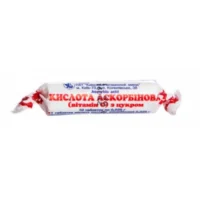Description
Aquavit (Cholecalciferol) Oral Solution 375 mcg/ml. 15000 IU/ml. 10 ml. Vial №1
Ingredients
Each 10 ml vial contains:
- Cholecalciferol – 375 mcg
- Equivalent to 15000 IU of vitamin D
Dosage
Recommended dosage:
- Adults: 1 vial orally once a week
- Children: Dosage to be determined by a healthcare provider
Indications
Aquavit oral solution is indicated for:
- Vitamin D deficiency
- Supporting bone health
- Regulating calcium and phosphorus levels
Contraindications
Do not use Aquavit oral solution if:
- You have hypercalcemia
- You are allergic to any components of the product
Directions
How to use:
- Shake well before use
- Administer orally as directed by a healthcare provider
Scientific Evidence
Aquavit oral solution provides a concentrated dose of cholecalciferol, a form of vitamin D essential for calcium absorption and bone health. Studies have shown that vitamin D supplementation can effectively raise serum vitamin D levels and improve bone mineral density in individuals with deficiency. Research also suggests a potential role of vitamin D in reducing the risk of fractures and falls in the elderly population.
Additional Information
Pharmacological Effects: Cholecalciferol, the active ingredient in Aquavit oral solution, acts as a prohormone that undergoes hydroxylation in the liver and kidneys to form the biologically active form of vitamin D. This active form plays a crucial role in maintaining calcium and phosphorus homeostasis, supporting neuromuscular function, and modulating immune responses.
Clinical Trials: Clinical trials evaluating the efficacy of cholecalciferol supplementation have demonstrated its benefits in reducing the risk of fractures, improving muscle strength, and enhancing overall bone health. Long-term studies have also linked adequate vitamin D levels to a lower incidence of chronic diseases such as osteoporosis and cardiovascular conditions.





